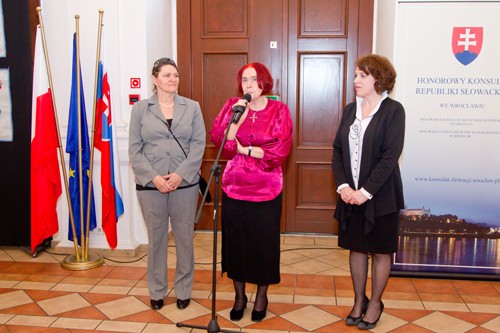
Slovak „cook” and other European tapestries.
On 27th April 2012 in the Ethnographic Museum in Wroclaw there was an open day of Slovak „cook” and other European tapestries exhibition. Co –organizer and sponsor of the exhibition was Maciej Kaczmarski.On June 16th, Honorary Consul together with Ethnographic Museum and Slovak institute organized the exhibition under the title:” Slovak „cook” and other European tapestries”. Guest present on the exhibition were among others: Slovak institute Director Helena Jacošova, Honorary Consul Proxy Loan Susmanek . Showpieces belong to a private collection of L’uba Vladykova, Elzbieta Berendit and Elzbieta Piskorz- Brankowa.
Tapestries spread out from Germany and the Netherlands to many other countries. They were generally used already in XIX century as a way to highlight the tidiness and coziness of the house’ heart – kitchen. Fashion for decorating houses with them was connected with modernization of middle-class houses. On the turn of XIX and XX century tapestries appeared in other European countries, first in middle-class houses, than working class and also in villages. That last stage of migration took place after the World War I.
Tapestries were most popular in 1960 of the XX century. It are mostly white canvas decorated with a needle work and sometimes even with printed patterns or painted with a paint. Plant motives are very common but also different scenes and writings – mostly rhyme maxims. On the exhibition we are presenting many tapestries from private collection of three collectors. Ľuba Vladyková-Šmajdowá is from Slovakia and has a collection of almost 1000 pieces, and part of it describes Wroclaw. Elzbieta Piskorz-Branekova – the author of the exhibition scenario – is an ethnographer and former worker of Ethnographic Museum in Warszawa. Her collection contains over 150 pieces from different countries (Bulgaria, Germany, Hungary, Czech and Slovak Republic, Poland). Polish tapestries are presented by Elzbieta Berendt – Director of the Ethnographic Museum.
 |
|
 |
|
 |
|
 |
|
 |
|
 |
|
 |
|
 |
|
 |







